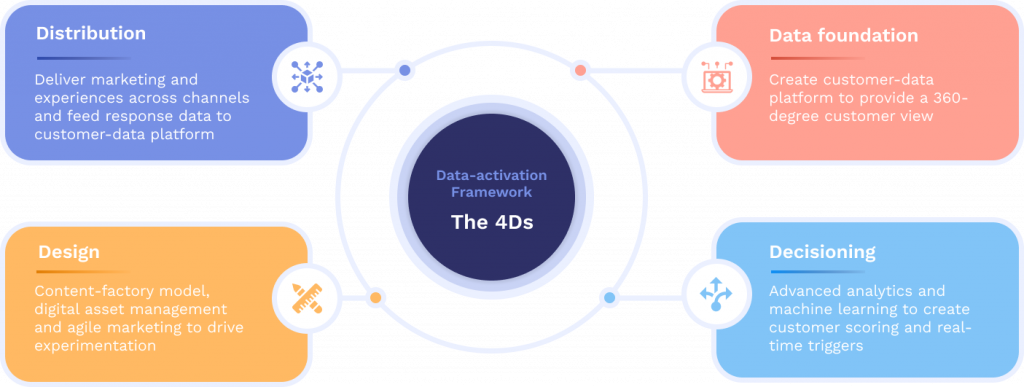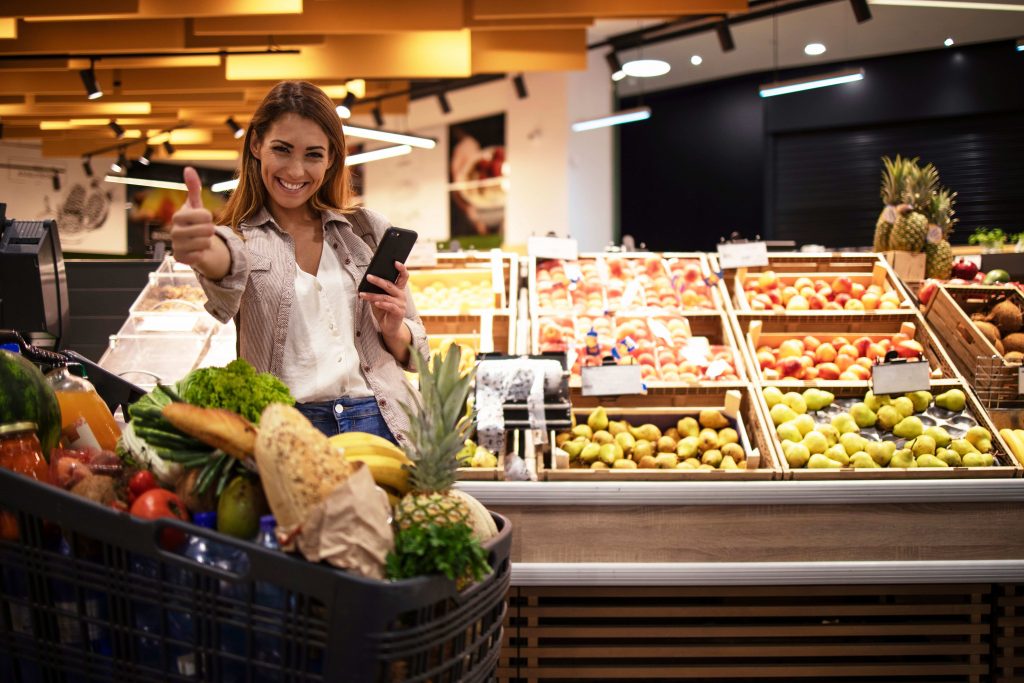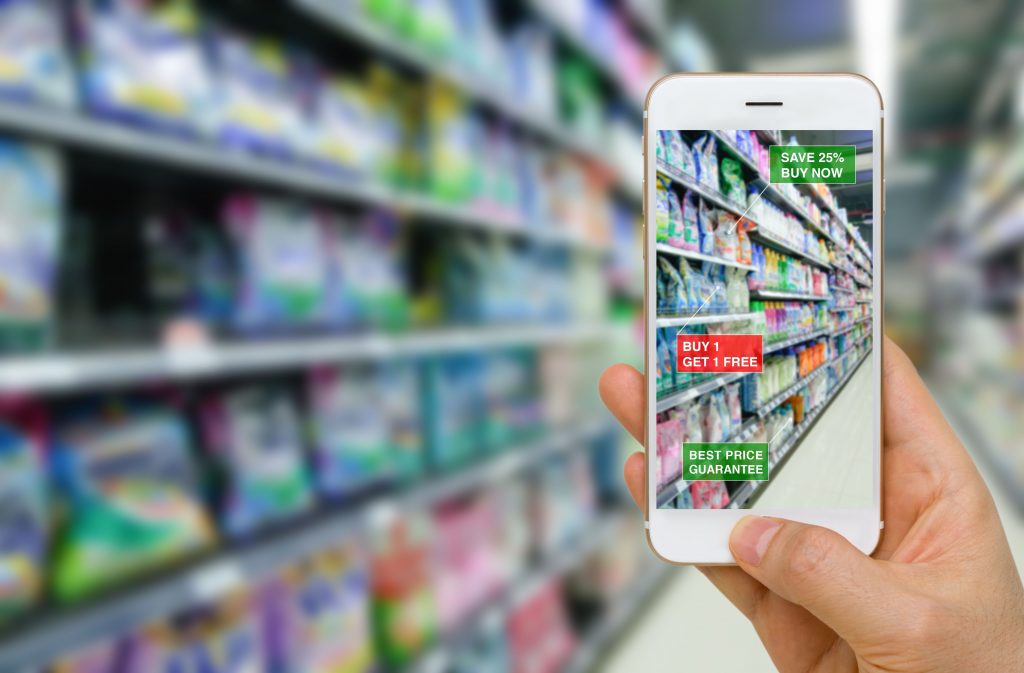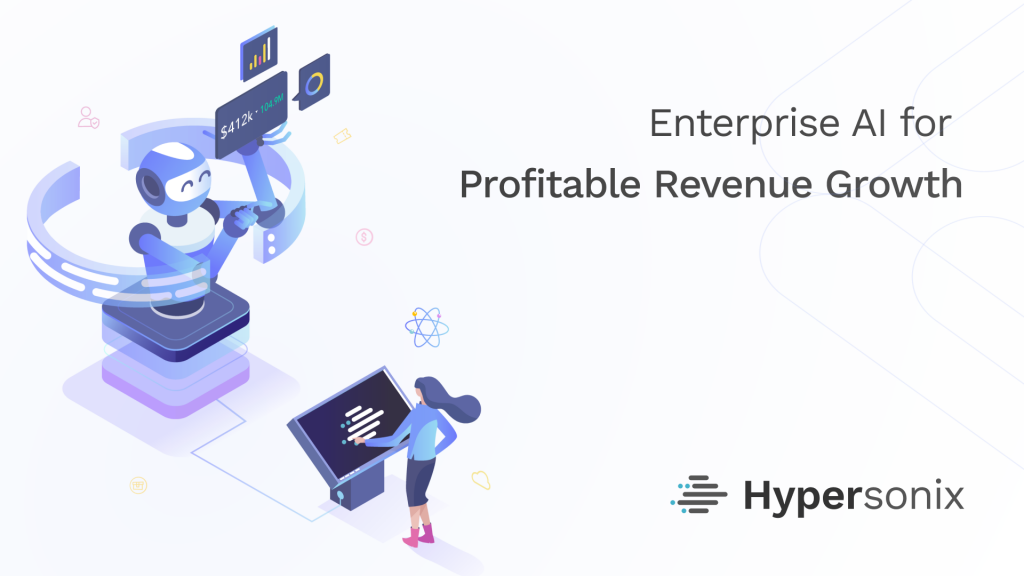Strategies to drive profitable revenue growth with customer-centric AI
Strategies to drive profitable revenue growth with customer-centric AI
AI entered our worlds to make life easier with systems supporting speed, safety, and simplicity. In its early stages, AI was significantly input-focused with the agenda of supporting the evolution of the technology with applications that were largely sci-fi. Today, with the increased consumerization of AI, the grocery industry though a late adopter with its fundamental high-touchpoint attribute is all set to be the role model for how businesses can harvest the most Return on AI.
Complemented by the evolution of new-age disciplines like “Behavioral Science” data scientists today are manoeuvring through oceans of data, finding actionable intelligence. Away from the realms of experimentation, AI’s increased acceptance stems from its ability to deliver bottom-line and top-line gains. As the pandemic choked business profitability the opportunity to leverage AI as a silver bullet to get business back on its feet is clear and present.
The idea of customer-centric AI evolves from a deep understanding and appreciation of the most important stakeholder for every business—the customer. A strategy that puts the customer at the center of the universe, building products, services, solutions, and experiences focused on stated and unstated customer expectations when accentuated with the power of AI is destined to win.
While the customer-centric narrative has largely been owned by the world of digital commerce under the “customer experience” umbrella the new “phygital” world with its immersive customer engagement possibilities for offline experiences, is sweeping the world with a wave of solutions that can critically impact the way businesses have harnessed value. And with the bread-and-butter nature of grocery, the opportunity to apply actionable intelligence has also exploded in scope and impact.
Our top 5 strategies to move the needle with AI.
Personalization at Scale
The grocery business is all about preferences where loyalty is as strong as it is fickle. Using advanced analytics and ready-to-use assets and tools, and agile principles grocers can with the right AI intervention optimize every stage of the customer’s cross-channel journey— across acquisition, activation, and engagement, and even advocacy. And all of these are tailored to each customer in real-time depending on their attributes, context, and behaviors.
“Personalization at scale has the potential to create $1.7 trillion to $3 trillion in new value. Capturing this value will require mastering the technologies and addressing the organizational disconnects—all while forging trust with customers and protecting their data.” reads a McKinsey Insight that further articulates the 4Ds that support personalization.

The role of a solid data infrastructure to support the transformative ambitions of an AI-led future is critical. And the right AI-driven platform will make this future so much more accessible.
Understanding the “Share of Stomach”
We are all witness to a seismic shift in grocery-shopper behavior during and after the pandemic with the grocery industry that traditionally saw an annualized growth of 1 to 2 percent, is now clocking 10 to 12 percent. There is also a very interesting trend of consumer habits witnessing a significant shift towards healthier and more affordable products.
BCG for instance talks about a $2.5 trillion global opportunity as new eating habits forged during the pandemic are expected to outlast the pandemic as surveys indicate that 60% of consumers plan to reduce spending at restaurants and increase at-home eating even as COVID-19 restrictions are lifted. Grocery retailers with the vision to capitalize on consumers’ changed behavior have an opportunity to build a lasting presence in the profitable in-store or at-home dining market.
Grocers who crack the new consumer appetite with the right data intelligence in place will win the “share of stomach”.

Creating Customer “Wow-marks”
Customer satisfaction is a yesteryear phenomenon. Today, more than ever brands quest for customer delight. AI with its innate ability to do things that were not traditionally possible, today offers immense possibilities. The natural frequency of customer interactions with Grocery offers tremendous flexibility for experimentation and creativity both of which a smart AI backbone will ably support.
There’s also a very interesting backward integration at play here. E-commerce platforms that segued into physical retail with their “go” style engagements set the ball rolling on the unusual opportunity. Gartner predicts that by 2023, five Tier 1 grocery retailers would have adopted hybrid store models installing “go-style” smart check-out formats within their larger superstores. Solutions that use computer vision to track customer purchases across the entire store, through smart carts or at self-check-out are getting accentuated with deeper intelligence on customer preferences and recommendation engines that focus on customer delight.

A large grocery chain in the US, for instance, is testing the idea of smart shelves that automatically with its sensors identify the shopper and highlight products they might be interested in. These recommendations are deeply integrated with customer profiling data that will reveal their preference for products based on their recent purchase patterns—a new mom or someone on a weight-loss program. And of course, a high level of focus on the one thing that delights customers the most in a grocery shopping experience—being intimated when the item on their shopping list is on sale or expected to be on sale.
Driving the Autonomous Agenda
AI applications across grocery straddle the entire gamut that include in-store, in-warehouse, and online. Some of the most fascinating customer-centric interventions include:
- Bots that roam stores asking customers what they are looking for
- App driven in-store customer navigation systems getting customers to exactly the things they are looking for
- Cognitive engines that ask questions to direct someone to the list of ingredients for the next perfect meal
- Voice-enabled apps that take customer orders and have things ready for pick-up
- Bots that are taking over warehouses and fulfillment centers driving unprecedented efficiencies

And behind the scenes robots are taking over on-floor intelligence with their ability to own inventory management end to end. They help in real-time price corrections and challenges around understocking or overstocking. An autonomous retail robot that scans the store every day to collect high-definition images of products, prices, and location thus kicking off the next wave of “bot-assisted everything”.
Building on the Data-centric Strategy
Every customer-centric ambition needs a data strategy to see it fructify. The sheer volume and acceleration of data availability have reached nearly immeasurable levels today, leaving many businesses struggling to get accurate insights from this data and improve outcomes based on better business decisions. Leaders in the grocery businesses have an innate desire to grow by introducing new products, discovering fresh channels, and finding and converting additional customers.
In recent years, artificial intelligence and machine learning technology have matured, providing the capability to massively improve the speed and accuracy of storing, organizing, and retrieving consumer data. At Hypersonix we assist customers in finding new ways to grow by better accessing data and discovering complete and correct insights about consumer behavior.

Led by advanced AI/ML, Hypersonix generates accurate insights by frequently analyzing business results in real-time. To understand all the potential opportunities for your brands, Hypersonix can pre-run thousands of simulations in advance to help build confidence in users are selecting the best possible business outcome.
A strong data intelligence system also serves as fertile ground for creative ideas where grocers can look at newer ways to provide customer delight. Through the effecting splicing and dicing of customer data, grocers have with them the tools needed to affect a business turnaround, turning data into dollars. And through all these interventions win the battle for mind-share, wallet-share, and market-share.






